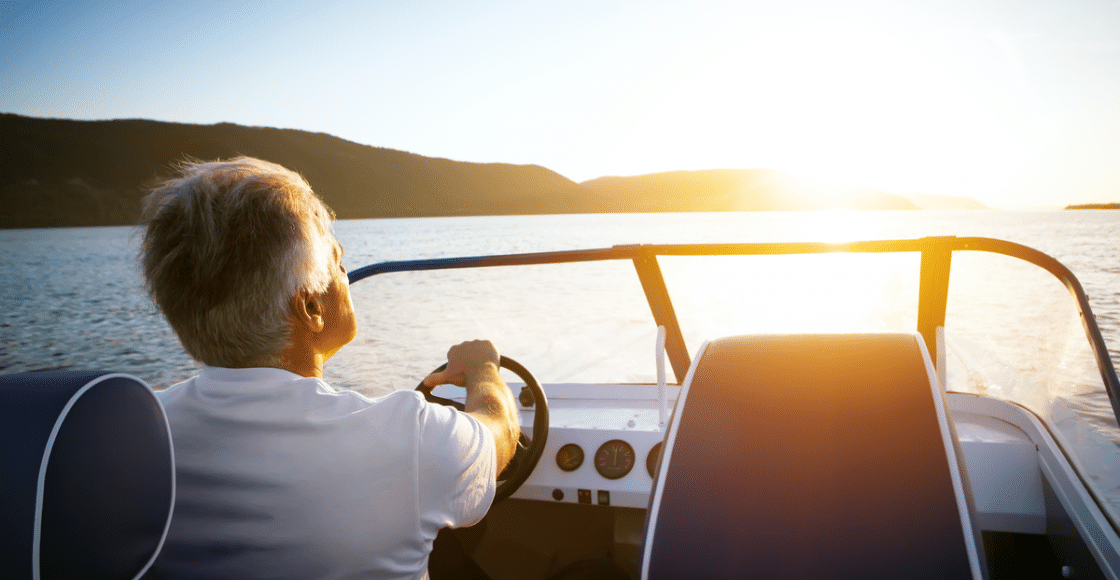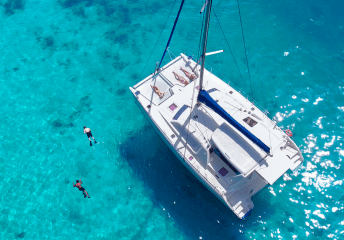Driving a Boat: 10 Tips for Operating a Boat
Last Updated on August 17, 2023 by Boatsetter Team
The next time you take out your own boat or rent a boat, you want to make sure you’re ready to take the wheel safely and with confidence, but what if you’re just learning how to drive a boat in the first place?
Don’t worry—driving a boat isn’t as difficult as some people might imagine. Whether you’re a renting a boat, or you’re a seasoned captain or new boat owner, operating a boat is simple by following these 10 tips.
When learning how to drive a boat for the first time, follow these 10 steps:
- Always maintain a good lookout of your surroundings.
- When in doubt, slow down. Slow is pro!
- Never operate a boat while under the influence of drugs or alcohol.
- When driving in tight spaces to maneuver up to a dock or slip, shift into neutral for more precise handling.
- Under how to properly trim a boat to improve efficiency and performance.
- When approaching a large wave or wake, navigate towards the wake at a 45-degree angle.
- When on plane, make slow and steady steering adjustments.
- When on plane, avoid fast, sudden changes to the throttle.
- Study the ‘rules of the road’ before even leaving the dock.
- Always take into account weather and external environment factors like wind, waves and current.
Already Own a Boat? Earn an Average of $20K/season by Renting it Out on Boatsetter
1. Always maintain a good lookout
This mostly boils down to paying attention to what’s around you whenever you’re at the wheel. According to Coast Guard statistics, the number-one reason accidents occur is because of a failure to maintain a good lookout and pay attention at all times. Constantly scan the horizon, take note of boats close enough to present a potential hazard, and always look back and check over your shoulder before making turns or quick stops.
2. When in doubt, slow down
On the rare occasion a boating accident occurs, it often might have been avoidable if the captain had more time to respond. That may mean approaching the dock at a crawl instead of a jogging pace, or cruising at 20 mph rather than 30. In any case, when you wonder if you’re going too fast you probably are, and it’s time to consider taking it down a notch.
3. Never drive a boat under the influence of drugs or alcohol
Yes, we know this is pretty obvious, but it still happens—and it shouldn’t. Always designate a sober skipper. Enough said.
4. Use ‘neutral’ to your advantage when maneuvering in tight spaces
When driving a boat in close quarters to maneuver up to a dock or into a slip, turn the wheel while the boat is in neutral. Shift into gear until the boat begins to respond as desired, and then shift back into neutral. Repeat the process as necessary. Eliminating any power or steerage between adjustments allows for much more precise handling.
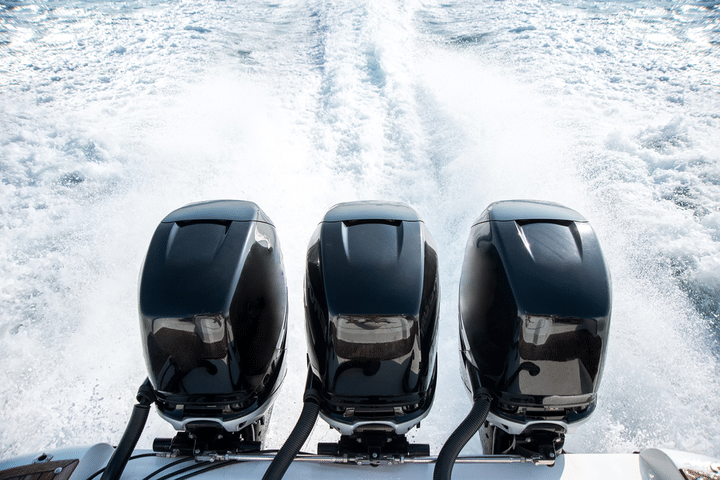
5. If the boat has trim tabs or a trimmable drive, try trimming the bow up and down a bit.
Understanding how to properly trim a boat can have a dramatic effect on how comfortable the ride is, but every boat reacts differently to trimming in different sea conditions. So, most of the time it takes a bit of experimentation to find the sweet spot. The most important thing is simply that you try trimming, because many boaters never make any adjustments at all and never discover how big a difference it can make.
6. Approach large waves or wakes at a 45-degree angle
When approaching large waves, rather than hitting them head on try taking them on at about a 45-degree angle. This usually helps minimize impacts and reduces the chances of the boat catching air.
7. When on plane, make slow and steady steering adjustments
When traveling at planning speeds and especially when running at very fast speeds, make steering adjustments slowly and smoothly. Jerking the wheel one way or the other can cause sudden shifts that can catch your passengers unawares, and turning very rapidly at high speeds can be downright dangerous.
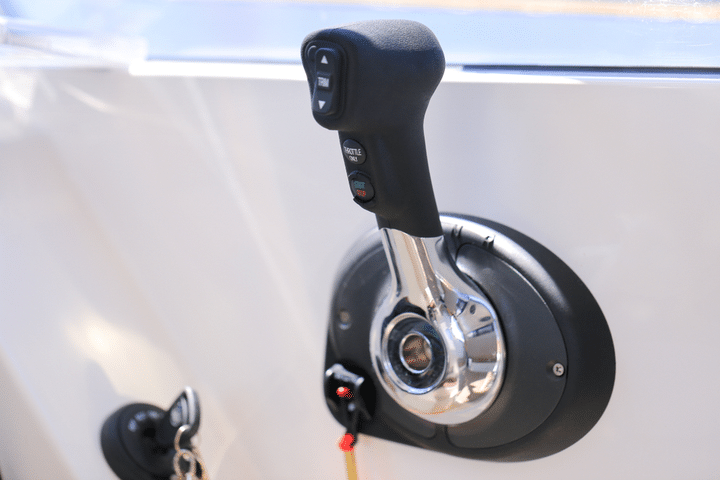
8. When on plane, avoid fast, sudden changes to the throttle
When traveling at planning speeds and especially when running at very fast speeds, also avoid sudden changes to the throttle. In a car when you slam on the brakes everyone’s belted in. But in a boat when you chop the throttle everyone is not, and people and gear can fly forward. So it’s important to make those speed adjustments slowly. Note: there will be times and situations where safety may demand a sudden slow-down. In that case, be sure to shout out a warning to the crew to hold on before you cut power.
9. Learn the ‘rules of the road’
These are the United States Coast Guard’s regulations, which are intended to prevent collisions and accidents at sea. Of course, the federal handbook makes for some rather dry reading, but you’ll learn the most important parts when you take your safety course and get your boating license. You should also check out Boatsetter’s safety standards.
Be sure to read How to Get a Boating License, as well as Do You Need a Boating License to Rent a Boat? for more information.
10. Always account of weather and other environment factors
Take stock of the environmental conditions that will affect how the boat responds to your input. Factors like wind, waves, and the current can shove your boat this way and that, and when you turn a boat’s steering wheel it won’t always necessarily react exactly as you had expected.
If you look at trees and flags to assess the winds and watch for the ripples of a current against solid structures, however, you’ll have a heads-up as to how they may affect your boat once it’s off the dock.
Ready to take the helm?
Always remember, each and every boat will handle a bit differently. When you first pull away from the slip familiarize yourself with the steering and throttle, and use a healthy dose of caution until you determine how well the boat does or does not react to turning the wheel and applying power. Within a few minutes you’ll get a feel for how the boat responds. And it won’t take long before driving a boat—any boat—comes as naturally as driving a car.
Ready to Go Boating? Browse Available Boat Rentals Near You
Editor’s Note: This article was originally published in June 2021 and updated in June 2022.
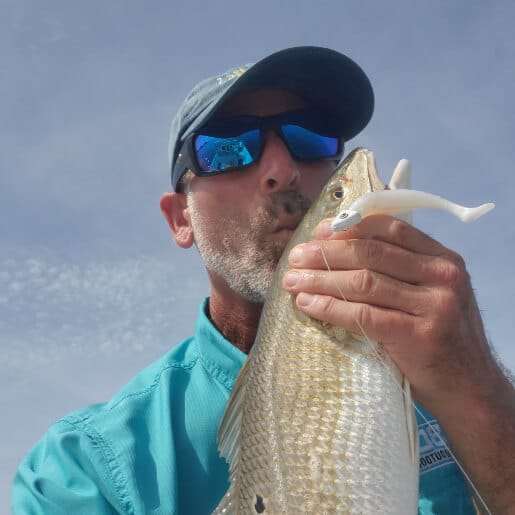
With over three decades of experience in marine journalism, Lenny Rudow has contributed to dozens of boating and fishing publications and websites ranging from BoatU.S. Magazine to BDOutdoors.com. Rudow is currently the Angler in Chief at Rudow’s FishTalk, he is a past president of Boating Writers International (BWI), a graduate of the Westlawn School of Yacht Design, and has won numerous BWI and OWAA writing awards.
